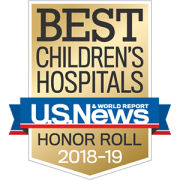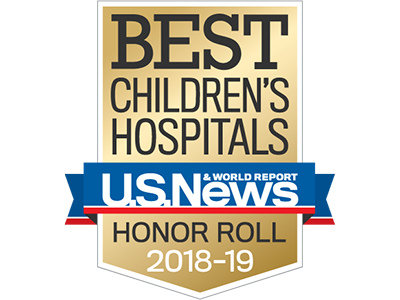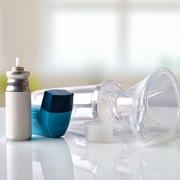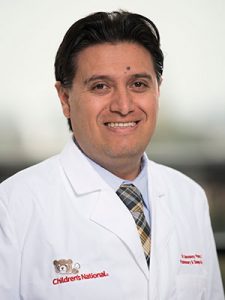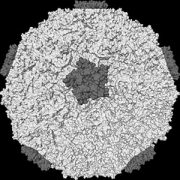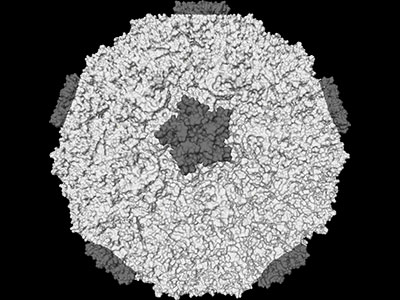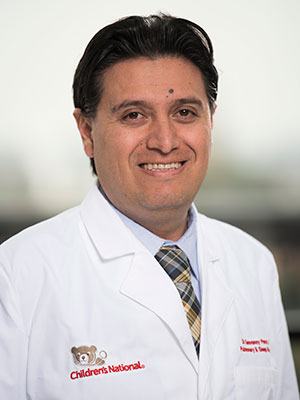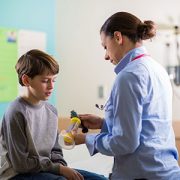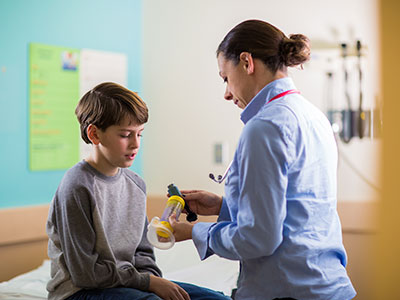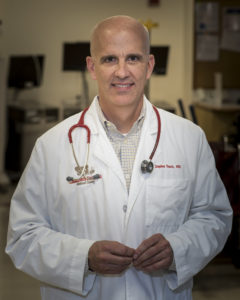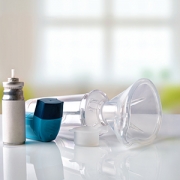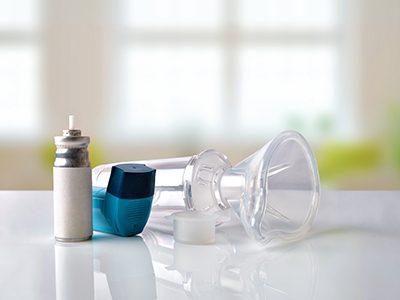Newborns with suspected food allergies breastfed significantly longer

Mothers whose newborns had suspected food allergies reported breastfeeding them significantly longer than women whose infants had no adverse reactions after food exposure, according to preliminary research led by Karen A. Robbins, M.D., and presented during the American Academy of Allergy, Asthma & Immunology 2019 Annual Meeting.
According to the Centers for Disease Control and Prevention (CDC), food allergies affect 4 to 6 percent of U.S. children, making such allergies a growing public health concern. Researchers are attempting to learn more about the interplay between food allergies and what, when and how children eat to inform allergy-prevention efforts. Little is known about the association between perceived food allergies, intolerance or hypersensitivity among babies eating their first bites of solid food and how long they’re breastfed.
Dr. Robbins and colleagues analyzed data gathered through a longitudinal study led by the Food and Drug Administration (FDA) and the CDC from 2005 to 2007. The Infant Feeding Practices Study II tracked diet and feeding practices of about 2,000 women late in their pregnancies and followed their babies’ diets through the first year of life.
Some 2,586 breastfeeding mothers in the study completed surveys when their infants were 4, 9 and 12 months old. The women were asked whether there were problems caused by food, such as an allergic reaction, sensitivity or intolerance. The majority of these infants (84.6 percent) had no suspected allergic reaction to either food they ate on their own or to food they were exposed to via breastmilk. The mothers reported that nearly 11 percent of infants reacted to something they ate; 2.4 percent reacted to food products they were exposed to via breastmilk; and 2.4 percent reacted to both food they consumed directly or were exposed to via breastfeeding. They also found:
- Infants with suspected food allergies after exposure to food their mothers ate were breastfed a mean of 45.8 weeks.
- Infants with food intolerance after both exposure to food their mother consumed and food they ate themselves were breastfed a mean of 40.2 weeks.
That contrasts with infants with no concern for food reactions, who were breastfed a mean of 32 weeks.
“Breastfeeding a newborn for the first few months of life helps their developing immune system become more robust, may affect the microbiome, and could influence or prevent development of allergy later in life,” says Dr. Robbins, an allergist at Children’s National Health System and lead author of the research. “However, mothers’ perceptions of their newborns’ adverse reactions to food appears to factor into how long they breastfeed.”
One potential concern is that extended breastfeeding can impact solid food introduction practices.
“Gradually transitioning to solid food gives infants an opportunity to sample an array of foods, nibble by nibble, including food allergens like peanut and eggs. We know from previously published research that introducing high-risk babies to a food allergen like peanuts early in life appropriately primes their immune system and dramatically decreases how often these children actually develop peanut allergies,” Dr. Robbins adds. “The relationship between breastfeeding and allergy development is complex, so understanding mothers’ practices is important. We also do not know how often these early reactions result in true food allergy, compared with transient food intolerance.”
American Academy of Allergy, Asthma & Immunology 2019 Annual Meeting presentation
- “Perceived food allergy, sensitivity or intolerance and its impact on breastfeeding practices.”
Monday, Feb. 25, 2019, 9:45-10:45 a.m. (PST)
Karen A. Robbins M.D., lead author; Marni Jacobs, Ph.D., co-author; Ashley Ramos Ph.D., co-author; Daniel V. DiGiacomo, M.D., co-author; Katherine M. Balas BS, co-author; and Linda Herbert, Ph.D., director of Children’s Division of Allergy and Immunology’s psychosocial clinical program and senior author.









